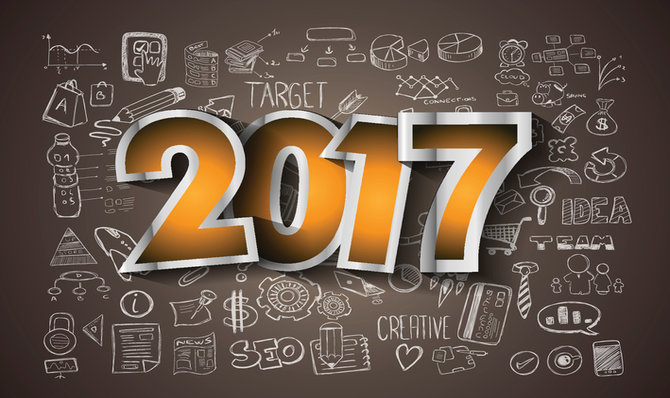Three PR Trends For 2017
Jan 09, 2017 Samantha McGarry
One of the things I find most thrilling most about working in public relations is there’s never a dull day. This is an industry that surges forward, driven by business goals, digital innovation, the nuances of the markets, changing consumer behaviors, editorial agendas, social feeds and the relentless 24/7 news cycle.
InkHouse was founded in 2007 during the nascent days of blogging and social. With every passing year, we’ve embraced the onslaught of change in PR and made it the hallmark of our work, challenging ourselves to think and act differently.
Today, the political winds have changed and, with a new president just days away from assuming office, it’s not a stretch to say that 2017 will be markedly different - for PR, news journalism and businesses. Against this landscape, here are some important PR trends that we believe will emerge:
1. Data-infused PR: We’ve long talked about the importance of data to anchor your perspective in authority, for strong visual content and measurement. But in 2017, expect all facets of PR to be infused with data:
- Analytics platforms like TrendKite (in which we recently invested) will be used not just to report results but also to extract fundamental new insights. Savvy PR pros will routinely tap these insights to make data-informed strategic decisions and to connect the dots more meaningfully between PR investments and actual impact. As these tools start to integrate with CRM platforms, by the end of 2017, we’ll be closer to showing how PR finitely impacts SEO, lead generation and business results - the long-awaited Holy Grail.
- New roles and forms of collaboration will emerge between PR practitioners and data scientists. The reality is that mining data and storytelling are distinct skill sets involving opposing sides of grey matter. The PR data scientist could be the hot new job opportunity in 2017: someone analytical enough to master the tools and critical thinking required to inquire and organize data, yet creative enough to unearth interesting patterns and intriguing data points from which new stories can be built. The same benefits will also be achieved by teaming up with “traditional” data scientists, learning each other’s vernacular, and collaborating on hypotheses for data-infused stories.
- New expressions of data-based storytelling will emerge in 2017. While the commissioned survey may have become a tired technique, I wouldn’t count it out completely. New approaches for research or routes to data should be considered: such as partnerships with industry associations or think tanks armed with business intelligence tools. This will add more rigor and validity to the data and distill the “vendor-sponsored” skepticism that is now rife among reporters. Another important evolution in 2017 will be how we illustrate data-infused stories. 2016 marked the death knell for infographics but saw the rise of innovative tools developed by the likes of Google News Labs and other publishers like Quartz’s Atlas platform, so why not PR and content creators too?
As publishers continue to figure out monetization models, we can expect to see more axing of reporter jobs in some areas, hiring in others and the re-invention of newsrooms, like what was just announced at the Boston Globe. For PR people, this means relationships will matter more than ever in 2017 as reporters change beats, publications and so on. But the most important trend to expect is that reporters are going to be tougher than ever - and PR pros are going to need to be prepared to meet this head on, with confident spokespeople and messaging that is both authentic and defensible. To quote Recode’s executive editor Kara Swisher:
“I think we should really call people out on things. We have to stop being quite as cooperative…. We don’t question things as much as we should.”
3. The rise of audio: 2016 saw video, especially live video, take center stage as a content tool and channel and I don’t expect that to diminish at all this year. But 2017 looks primed to become the year of audio. While podcasts saw a resurgence in recent years, expect them to grow full throttle in 2017, fueled by innovations like the recently launched Facebook Audio which brings audio-first content into the news feed, starting with the BBC and expanding soon to other publishers. Similarly, the pervasiveness of the Amazon Echo (which sold out this Christmas) and other connected products and their chatbots are also introducing new forms and channels for audio content delivery. According to Digital Content Next, mainstream publishers are already exploring options for delivering content via the Echo while Amazon is actively recruiting publications for its Flash Briefing which “voices” the news. At the recent INBOUND conference, Digiday’s ed-in-chief Brian Morrisey talked enthusiastically about the audio opportunity for brands and publishers - and the audience of marketers concurred.
So what does this mean for PR? In 2017, we must find opportunities to place our experts and spokespersons into these new forms of audio “media coverage” that will be reaching large audiences via their social feeds and their living rooms - and figure how to measure it. Also, we must get creative about producing and distributing more of our own audio content.
So there you have it: three important PR trends for 2017 to either keep an eye on or embrace wholeheartedly. One way or another, it’s going be an interesting ride.






